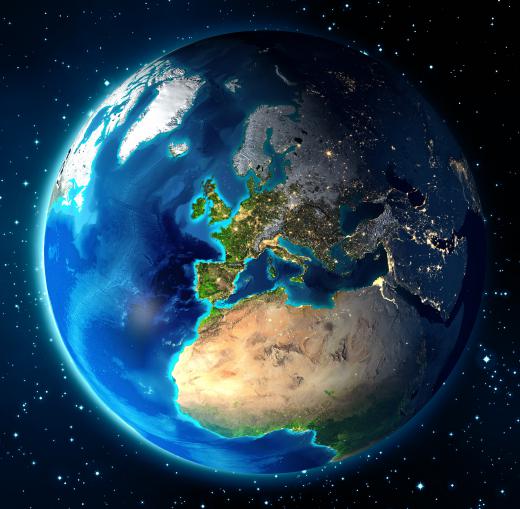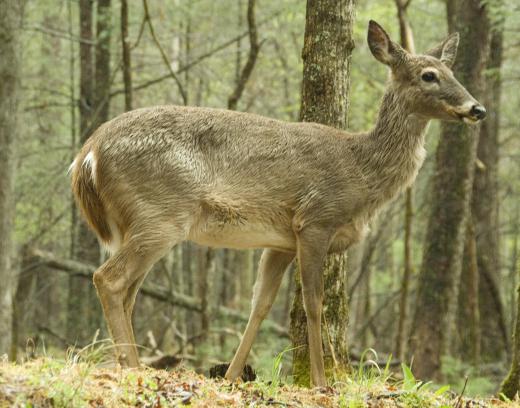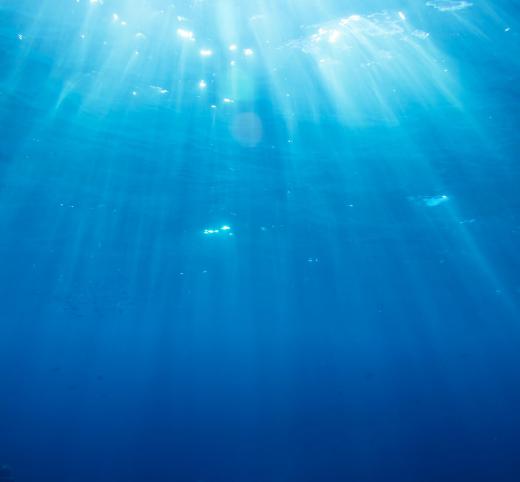What is the Biosphere?
 Michael Anissimov
Michael Anissimov
The biosphere is defined either as "the place on earth's surface where life dwells" (Edward Suess' original 1875 definition) or, in a more narrow sense, as just the organisms themselves. The total global biomass is at least three trillion tonnes, probably more. The global total of above-ground woody biomass is approximately 422 billion tonnes.
Human biomass is about 500 million tonnes, somewhat less than that of Antarctic krill, and biomass produced for human use exceeds three trillion tonnes. The bacterial biomass is estimated to be similar to that of plants. Complicating these measurements is that different researchers may publish figures of "dried biomass," leaving out the weight of water, without explicit mention. In general, amounts are greater near the equator and lower near the poles.

Since at least 2.7 billion years ago, during the so-called the Oxygen Catastrophe, the biosphere has been intimately linked with the hydrosphere (oceans), lithosphere (crust), and atmosphere (air) of the planet. The Oxygen Catastrophe occurred about 300 million years after the photosynthetic microbes — the ancestors of present-day cyanobacteria — evolved.

Oxygen is a byproduct of photosynthesis, and massive quantities of it were released as photosynthetic organisms spread across the face of the Earth. The Earth's carbon dioxide and nitrogen atmosphere was progressively converted into an oxygen/nitrogen atmosphere, as much of the free carbon dioxide dissolved into the oceans, precipitating out as limestone, and cyanobacteria converted it into oxygen. Many of the anaerobic organisms living at the time went extinct as a result, which is why the event is called a "catastrophe."

The biosphere is primarily composed of producers such as algae, plants, and photosynthetic bacteria. Consumers, like plant-eating animals and fungi, make up the minority, with predators making up the least of all. In an unusual exception, however, 99% of vertebrate terrestrial biomass consists of humans, their pets, and food animals. The marine vertebrate biomass significantly exceeds this.
Nearly, if not every, square meter of the planet is a part of the biosphere. Except for the third of the Earth's surface covered by desert, ice pack, or high-altitude mountains, plants grow practically everywhere, and where there is plants life, there is animal life. Life is also abundant in the oceans, where it primarily lives in the photic zone, where light reaches, in the top 656 feet (200 m). Life extends even to the deepest ocean trenches, however, where fish and shelled animals have been observed.
If bacteria is included, the biosphere is truly extensive. Advances in microbe detection and deep drilling have revealed bacteria at least 5.6 miles (9 km) below the surface, while atmospheric balloons have found airborne bacteria at altitudes of 3.7 miles (6 km). Life probably colonized every nook and cranny of this planet billions of years ago.
AS FEATURED ON:
AS FEATURED ON:













Discussion Comments
@bythewell - Developing artificial biospheres might actually really help us one day because it involves creating as much efficiency as possible in a closed system and that could be replicated in the human home as well.
If a home was operating somewhat akin to the closed system of a biosphere, it presumably wouldn't be creating that much pollution or needing that much input from the outside. If you could set it up in, say, a poor neighborhood in a developing country you could eventually take care of world hunger.
Unfortunately, most of our attempts at true closed systems haven't lasted all that long. The problem tends to be oxygen which usually ends up needing to be artificially introduced.
@umbra21 - They might also be the first we know of an alien biosphere if they are discovered on Mars or another planet. It's not likely that life currently exists anywhere else in our solar system right now, since we can see most places well enough to be able to tell, but it's possible that bacteria might live on those places and if they do, they would probably count as a biosphere.
Or they might find the remains of microbes that once lived there, either way proving that life is possible on other planets.
I find that to be the most exciting form of study when it comes to biospheres, although artificial biospheres like Biosphere 2 are also pretty fascinating.
I can see why it would be difficult to define how much mass the living matter of the biosphere actually contains when you take bacteria into account. We don't even know the limits of bacterial life, having found it in areas that you wouldn't dream anything could actually live (even in dense salt lakes which kill every other living thing). Bacteria and other tiny organisms are all around you all the time, and they are probably almost impossible to count at the moment.
I don't know if they are always included in a biosphere count, but they really should be as they are definitely necessary and part of life on Earth.
Post your comments